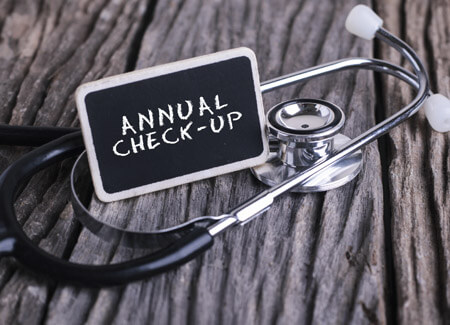Is it time to rethink the annual checkup?

The idea of the annual exam is well-woven in the fabric of our medical care. Whether the patient is covered by traditional insurance or a government plan, they’re entitled to at least one examination a year, complete with a battery of lab tests and screenings. However, it may be time to modernize this practice of the yearly exam. It’s come up in discussion a number of times over the decades, including a year ago in an editorial published in the New England Journal of Medicine.
In this piece, the panel points out many shortcomings of the annual visit. Annual visits do not decrease the rate of illness, nor do they lower our mortality rates. Also, certain screenings more often result in false positives than not, creating unnecessary stress for patients. Still, these yearly exams have one benefit patients and providers like: The regular contact forges a relationship and builds trust. In rethinking the annual visit, the new model should include that element, without sacrificing care.
Streamline and consult
Under the revised model, new patients would, of course, get that full exam. If everything points to good health, the next two annual visits could be much quicker and simpler. In fact, it would look more like a quick consultation, where the patient might fill out some health and screening surveys, and the doctor and patient would discuss managing risk factors and other quick topics.
Better hours
From a patient’s perspective, creating time and space for a checkup is a personal scheduling dilemma. Usually, they are forced to take time off of work or schedule appointments around their child’s school vacation time. What if your practice was friendlier to a family’s busy school and work schedule? Offer appointments in the off-hours, such as early mornings, weekends and evenings. If scheduling is less bothersome, patients may be more willing to take on an increasingly active role in their health care.
Community engagement
Patients, especially those of the millennial generation, are taking a more proactive role in their health and finding a sense of community with like-minded practitioners. (Think of a running club or a yoga studio.) Use a little creativity to help them meet their needs, and build mini communities designed to help health-minded patients meet their health goals and manage their risk factors. Design healthy-lifestyle workshops on topics such as how to prepare healthy on-the-go meals, ways to build healthy eating habits in young children, and solutions on incorporating fitness into busy lifestyles.
Sometimes, it’s worthwhile to take a close look at the current system and ask ourselves if the time has come to improve it.
Need collection help?
Call us at 1-800-279-3511 to REQUEST PRICING!
About the Author: Brian Eggert
Brian Eggert is a business development specialist and writer for IC System, one of the largest receivables management companies in the United States. With 18 years in the collection industry, Brian's experience includes operations, client service, proposal writing, blogging, content creation, and web development.










